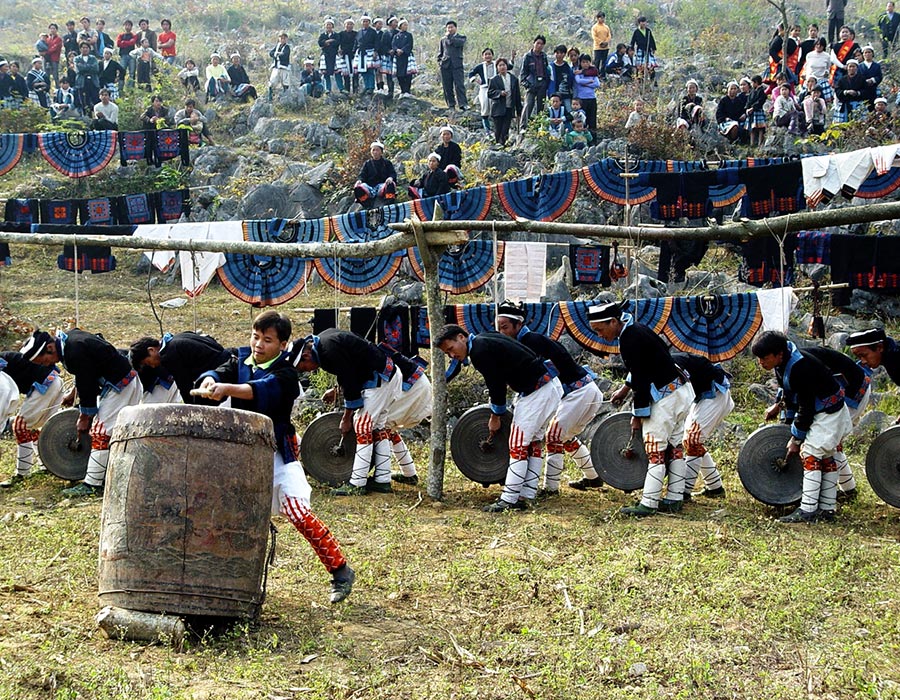Homecoming scenes


The aim of the project is to protect old residences and preserve historic and cultural relics like tablet inscriptions in the village.
It was a lucky coincidence that tourism companies started to promote the village as a destination to group travelers in 2010, the same year the ecomuseum opened. Owners of old houses like Hou Yujin jumped at the chance to work with travel agencies to receive tourists.
When the village was selected for the ecomuseum project, the local government began building roads to provide better access to the village. Visitors previously had to walk for around an hour along a rocky pass to reach the settlement.
"Our aim was to protect the original ethnic culture here," says Hou Wenqiang. "Villagers soon began to support the ecomuseum because it attracted tourists and helped to preserve their culture."
They also emphasized the need to protect intangible cultural heritage, such as bamboo-woven goods and traditional clothing.
The Zhuang people in Longji village sing folk songs relating to traditional themes, such as farming. Besides using stone to construct bridges and gates, they also use the material to make everyday articles, such as mill stones and water vats. The four major local specialties are tea, rice liquor, glutinous rice and pepper.
Pan Tingfang, former head of the village, says the locals are leading a better life now thanks to the growth in tourism. And this renewed prosperity has attracted more young people to return to their hometown to open restaurants and hotels rather than seek employment as migrant workers in big cities.
According to Pan, the locals are hospitable, honest and kindhearted. They are happy to interact with tourists and tell them about the best places to visit, such as the ecomuseum's exhibition hall.
However, both Pan and curator Hou know how hard it is to maintain the balance between developing tourism and protecting local culture.
"When villagers are building hotels or restaurants with bricks and mortar, there are no specific regulations. It looks a bit strange to have modern buildings among the older architecture," says Hou Wenqiang.
He says the local government should take the initiative to come up with solutions, such as relocating villagers to nearby areas to protect the original character of the villages.
He says that in a nearby village that's proving popular with tourists, much of the architecture has become a pastiche of brick and wood after years of commercialization-and that's the last thing he wants to see happen to Longji village.
Contact the writers through xulin@chinadaily.com.cn


















